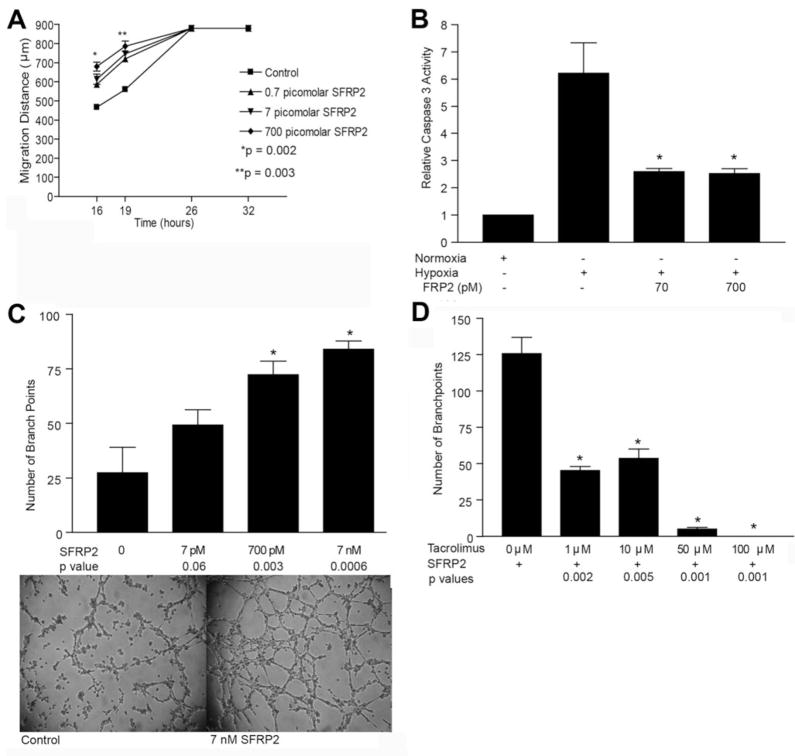Figure 3.
Effects of SFRP2 on cellular processes involved in angiogenesis: (a) SFRP2 increases endothelial cell migration in a wound scratch assay. The rate of wound closure is shown for controls and increasing concentrations of mouse recombinant SFRP2. The values are the means ± SEM, n=3 for each concentration. SFRP2 increased MEC cell migration at low concentrations ranging from 0.7pM–700pM. (b) SFRP2 inhibits hypoxia induced apoptosis in HCAEC cells. HCAEC’s were incubated in a hypoxic chamber for 24 hours with and without the addition of SFRP2. Relative Caspases 3 activity was measured as described in “Material and Methods” Section. SFRP2 inhibited hypoxic induced apoptosis at 70pM and 700pM (*p<0.02). (c) Mouse endothelial cell tube formation assay. SFRP2 induces endothelial tube formation at 8 hours in a concentration-dependent manner. (d) Tacrolimus inhibits SFRP2 induced tube formation in mouse endothelial cells.

